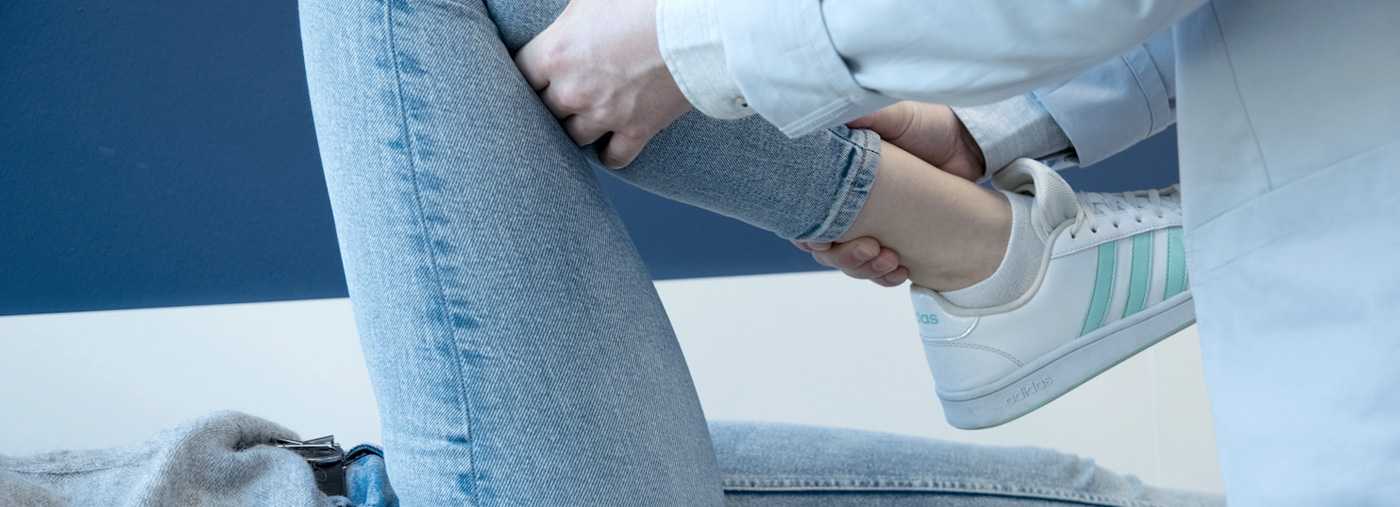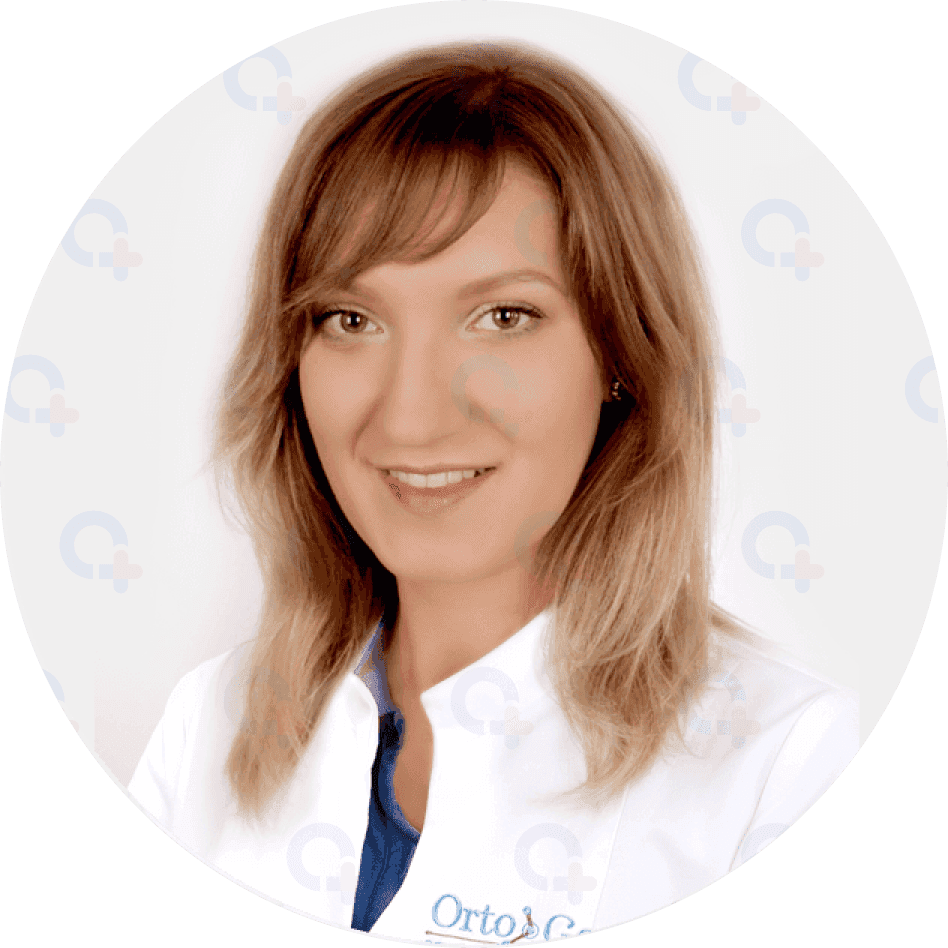Rehabilitation Warsaw and Płock
Rehabilitation is a medical discipline aimed at improving and restoring functional ability and quality of life for physically disabled, impaired, or those with musculoskeletal injuries or neurological disorders. It is based on comprehensive, individualised, and professional intervention. Our therapeutic procedures and methods are a fast and effective form of treatment for common conditions such as degenerative joint disease, overuse and post-training injuries of the musculoskeletal system, post-traumatic limb conditions, ligament injuries, peripheral nerve disorders, and lymphatic swelling.
Rehabilitation of the musculoskeletal system, including knee, shoulder, foot rehabilitation, as well as rehabilitation for pregnant women and postpartum, is one of our specialties. Individual work with the patient and support from experienced doctors enable us to achieve the desired results.
Rehabilitation - how to prepare for it?
- wear comfortable sports clothing and bring a towel.
- it is recommended not to eat a meal within 2 hours before the rehabilitation session.
Rehabilitation - our services:
- rehabilitation before and after orthopaedic surgeries
- rehabilitation for spinal pain syndromes
- rehabilitation after sports injuries
- rehabilitation for patients with degenerative joint disease, e.g. knee joint, hip, shoulder
- physiotherapy for pregnant and postpartum women
- therapeutic and sports massage
- lymphatic drainage
- consultation with a physiotherapy specialist
- medical training
- patient diagnostics and therapeutic plan programming
- kinesiotaping (dynamic taping)
- physiotherapy
- manual massage
- individual exercises with the patient
GALVANISATION
Galvanisation is one of the physiotherapeutic treatments that uses direct current. In practice, galvanisation involves placing two electrodes through which a low-frequency direct current flows over the area requiring rehabilitation.
Indications for this treatment include: nerve inflammation, plexus issues, or radiculopathy; degenerative changes; post-traumatic conditions; post-exercise pains; sciatica; shoulder impingement syndrome; neuralgia; facial nerve paralysis; hematomas; and swelling.
Contraindications for this treatment include: thyroid disorders; infections; skin inflammations; tumors; sensory disturbances; vein inflammation and thrombosis; pregnancy; metallic elements and electronic devices; active tuberculosis; skin ulcers; eczema; and impaired consciousness.
DIADYNAMIC CURRENTS
Diadynamic currents (DD) are low-frequency currents used in physiotherapy, also known as Bernard currents. The therapy involves using six types of currents (MF, DF, RS, CP, LP, MM), each with different effects depending on the type - stimulating, analgesic, electrostimulatory, muscle tension-reducing, and pain-relieving. When used in the appropriate combination, they are highly effective for: reducing inflammatory conditions in the body, improving circulation, reducing muscle tension and pain symptoms, stimulating muscles, and combating joint stiffness and frostbite.
Contraindications for this treatment include: metallic elements, implants, electronic devices (e.g., pacemakers), sensory disturbances, tumors, impaired consciousness, thrombosis, active infections, arteriosclerosis, skin inflammations, and pregnancy.
INTERFERENTIAL CURRENTS
Interferential currents, also known as Nemec's currents, are medium-frequency currents designed to stimulate various processes in the body. Rehabilitation using interferential currents provides pain relief, nourishes and stimulates tissues, reduces nervous system tension, stimulates circulation, and encourages muscle activity.
Contraindications for this treatment include: inflammation at the treatment site, metallic elements, implants, electronic devices (e.g., pacemakers), infections and febrile conditions, pregnancy, tumors, thrombosis and varicose veins, impaired consciousness, sensory disturbances, Parkinson's disease, arteriosclerosis, and multiple sclerosis.
TENS CURRENTS
The name TENS stands for Transcutaneous Electrical Nerve Stimulation, which refers to the use of low-frequency pulse currents to stimulate the release of endorphins and is applied in various pain conditions. Indications for treatment include: rheumatoid arthritis (RA), osteoarthritis, post-traumatic and post-operative pain, migraines, menstrual pain, post-amputation pain, dental pain, vascular pain, neuralgia, and arthritis.
Contraindications for this treatment include: epilepsy, frostbite, cancer, heart diseases, circulatory disorders, epilepsy, pregnancy, impaired consciousness, skin inflammations, metallic elements, implants, and electronic devices (e.g., pacemakers).
TRÄBERT CURRENTS
Träbert currents, also known as Ultra Reiz (UR) in electrotherapy, involve using low-frequency pulse currents known for their anti-inflammatory and analgesic effects. Indications for this treatment include: neuralgia, post-traumatic conditions, rheumatoid arthritis (RA), spinal degenerative disease, muscle pain, constipation, joint stiffness, and peripheral circulation disorders.
Contraindications for this treatment include: inflammatory conditions, tumors, sensory disturbances, diabetes, fever, moles at the treatment site, pregnancy, menstruation, heart diseases, metallic elements, implants, and electronic devices (e.g., pacemakers).
KOTZ CURRENTS
Kotz currents (also known as Russian currents) are medium-frequency currents used in electrotherapy. They enable stimulation and contraction of deeper muscle layers. This therapy is highly effective for mild peripheral paralysis, increasing muscle strength, reducing muscle tension, alleviating pain symptoms, treating flat feet and scoliosis, improving joint mobility, promoting muscle mass gain, and muscle regeneration.
Contraindications include: metallic elements, implants, electronic devices (e.g., pacemakers), pregnancy, acute inflammation at the treatment site, tumors, fever, skin inflammations, arteriosclerosis, and inflammatory conditions of the veins.
ELECTROSTIMULATION
Electrostimulation is a procedure within electrotherapy that involves stimulating muscles and nerves using electrodes placed on the patient's body. The treatment uses low-frequency currents and is typically performed in a series of about 10 sessions, spaced as recommended by the physiotherapist. Electrostimulation is commonly used for muscle regeneration after injury, as well as for paralysis and paresis.
Contraindications for this treatment include: metallic elements, implants, electronic devices (e.g., pacemakers), pregnancy, menstruation, tumors, inflammatory conditions, fever, and patient's impaired consciousness.
ULTRASOUND THERAPY
Ultrasound therapy uses low-frequency sound waves, which are effective in: alleviating musculoskeletal pain, loosening muscles, healing wounds and scars, increasing cell membrane permeability, and supporting treatment for conditions such as Sudeck's atrophy, bursitis, tendonitis, rheumatic diseases, degenerative disorders, and post-traumatic conditions.
Contraindications include: pregnancy, active tuberculosis, heart rhythm disorders, circulatory insufficiency, neuropathies, intervertebral disc herniation, venous thrombosis, metallic elements, implants, electronic devices (e.g., pacemakers), and tumors.
IONTOPHORESIS (the patient brings their own medication)
Iontophoresis is a treatment that involves introducing therapeutic ions into the body using direct current. This highly effective procedure allows medicinal substances to be applied directly to the affected area. Indications for this treatment include: circulation disorders, spinal and joint pain, muscle spasms, muscle pain, neuralgia, inflammation, scars, muscle or skin laxity, and degenerative conditions.
Contraindications for this treatment include: metallic elements, implants, electronic devices (e.g., pacemakers), fever, endoprostheses, acute skin inflammations, soft tissue inflammations, tumors, sensory disturbances, pregnancy, venous thrombosis, bacterial and viral diseases, fungal infections, risk of thrombosis, and open wounds.
POSTURAL DEFECT REHABILITATION
Postural defects can be categorized into two types: congenital defects and acquired defects, which arise due to external factors. Before initiating treatment for postural defects, a thorough diagnosis and assessment of the existing defect are always required. The most common postural defects among patients include scoliosis, lordosis, kyphosis, flat/round back, as well as pigeon or funnel chest. The goal of postural defect therapy is to reduce existing pain symptoms, loosen muscle contractures, and strengthen muscles. Treating postural defects involves a process in which a physiotherapist may employ various techniques, including manual therapy, individual exercises, and kinesiotaping (dynamic taping).
INDIVIDUAL EXERCISES WITH THE PATIENT
In individual therapy, exercises are specifically tailored to the patient's current needs, taking into account their health status and age. Various techniques are used in exercises to teach correct movement patterns and restore the patient's full functionality, lost due to disease processes or various types of injuries. Individual therapy involves using a variety of physiotherapeutic techniques that are effective in treating spinal pain syndromes, in pregnant women, athletes, individuals with neurological issues, and patients undergoing prescribed individual rehabilitation.
THERAPEUTIC MASSAGE
Therapeutic massage is a technique aimed at pain relief and relaxation. It is used to accelerate regeneration and is highly effective in reducing muscle tension, treating trigger points (painful points under pressure), absorbing post-traumatic bruises, preventing spinal pain, treating sciatica and degenerative changes, and reducing pain caused by stress, sedentary lifestyle, or overuse.
MANUAL THERAPY
Manual therapy involves using various techniques depending on the patient's specific issue, following a thorough diagnosis. Techniques used in manual therapy include cross-fibre massage, functional massage, deep tissue massage, joint manipulations, joint mobilisations, neuromobilisations, and stretching. For the patient, manual therapy may involve pressure and pushing within specific areas. Indications for manual therapy include pain symptoms, neuralgia, degenerative conditions, spinal misalignment, and postural defect rehabilitation. Contraindications include recent injuries, joint inflammations, cerebral circulatory insufficiency, and tumors.
THERAPY USING HYPERVOLT PLUS MASSAGER
The Hypervolt Plus massager is designed for experienced physiotherapists. Using this device allows for massages with varied pressure levels tailored by specialists, using 5 different heads designed for specific body parts.
Treatment with the vibrating massager gun:
- reduces muscle tension
- stimulates blood and lymphatic circulation
- provides intense tissue regeneration
- activates the nervous system
- improves tissue mobility and enhances their efficiency
KINESIOTAPING
Kinesiotaping, or dynamic taping, is a physiotherapy technique involving the application of special colorful tapes on specific body parts. This technique lifts the skin, creating more space between the skin and muscles, thereby reducing muscle tension and promoting relaxation.
Kinesiotaping is recommended especially for various types of pain: spinal pain (spinal pain syndromes), post-operative pain, strained and overly tense muscles, active injuries, and as a sports prophylaxis, and circulatory issues. This taping method is widely used in post-traumatic rehabilitation.
We invite you to take advantage of our rehabilitative treatments in physiotherapy and physical therapy at our three locations.
Rehabilitation in Warsaw and Płock.
Have you got questions? Get in touch with us - 22 100 45 20 or 24 337 62 66.
You can check the cost of rehabilitation and other services in our price list.

